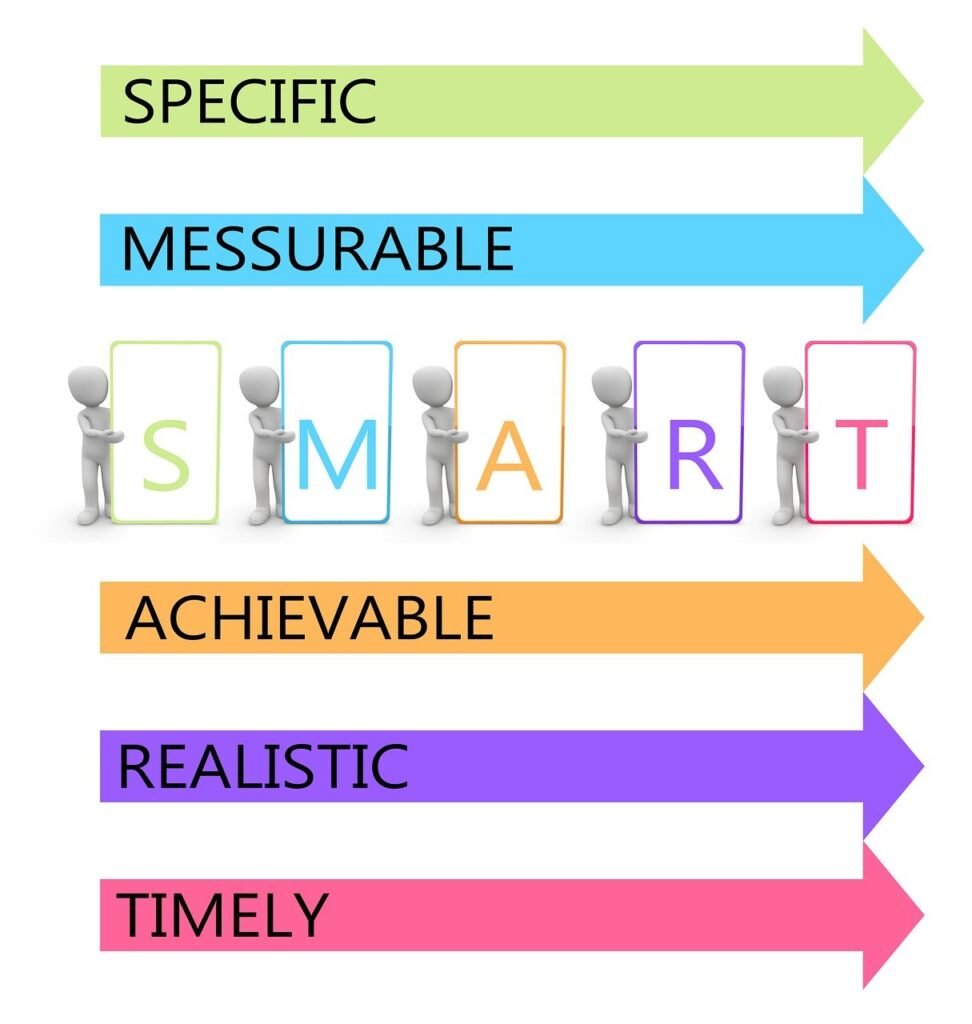7 Tips for Creating a Personal Productivity System
Imagine having a personal productivity system that not only helps you accomplish your daily tasks efficiently but also aligns with your Catholic values. With this unique approach, you can prioritize your goals, manage your time effectively, and find a deeper sense of purpose in your daily routine. Discover how combining productivity principles with a Catholic perspective can transform your approach to productivity, allowing you to live a more fulfilling and focused life.

1. Understanding Personal Productivity Systems
Why Personal Productivity Systems Matter
When it comes to getting things done and achieving our goals, personal productivity systems play a crucial role. These systems help us stay organized, manage our time effectively, and make progress towards our objectives.
Without a solid productivity system in place, we may find ourselves overwhelmed, constantly busy, but not necessarily productive. By understanding and implementing personal productivity systems, you can take control of your time and energy, and ultimately lead a more fulfilling and successful life.
Personal Productivity System Defined
A personal productivity system is a set of practices, techniques, and tools that individuals use to optimize their time, prioritize tasks, and increase their overall efficiency. It is a framework that helps you manage your work, personal life, and everything in between.
A good personal productivity system allows you to clarify your goals, break them down into actionable steps, and consistently make progress toward them. It also helps you stay organized, track your tasks, manage your time effectively, and maintain a clear mindset. Ultimately, a personal productivity system empowers you to maximize your productivity, achieve your goals, and lead a balanced and fulfilling life.
2. Key Components of an Effective Personal Productivity System
Goal Setting and Prioritization
One of the key components of an effective personal productivity system is goal setting and prioritization. Clearly defining your goals and priorities gives you a sense of direction and helps you focus your time and energy on what truly matters.

Take time to identify your long-term goals, break them down into smaller milestones, and prioritize them based on their importance and urgency. By setting clear goals and priorities, you can align your actions with your desired outcomes and make progress toward them in a focused and efficient manner.
Time Management Techniques
Time management is another critical component of a personal productivity system. Effective time management techniques allow you to efficiently allocate your time to different tasks and activities.
Explore various time management techniques such as the Pomodoro Technique, where you work in focused intervals followed by short breaks, or the Eisenhower Matrix, which helps you prioritize tasks based on their importance and urgency. Experiment with different techniques and find what works best for you in terms of maximizing your productivity and utilizing your time effectively.
Task Organization and Tracking
Keeping your tasks organized and tracking your progress is essential for maintaining productivity. Consider using tools like to-do lists, project management software, or digital calendars to keep track of your tasks and deadlines.
Break down your goals into actionable tasks, assign due dates, and regularly review and update your task list. By staying organized and tracking your tasks, you can stay on top of your responsibilities and ensure that nothing falls through the cracks.
Workflow Optimization
Optimizing your workflow is another important aspect of any personal productivity system. Look for ways to streamline your processes and eliminate inefficiencies. This might involve automating repetitive tasks, utilizing productivity tools and apps, or adopting strategies like batching similar tasks together. By optimizing your workflow, you can reduce distractions, save time, and increase your overall efficiency.
Mindset and Motivation
While practical tools and techniques are important, mindset and motivation also play a crucial role in personal productivity. Cultivate a growth mindset that embraces challenges, learns from failure, and continuously seeks improvement.
Motivate yourself by setting meaningful goals, celebrating small wins along the way, and regularly reminding yourself of the purpose behind your actions. By maintaining a positive mindset and cultivating motivation, you can overcome obstacles, stay focused, and consistently work towards your goals.
3. Choosing the Right Personal Productivity System
Assessing Your Needs and Preferences
When it comes to choosing the right personal productivity system, it’s important to assess your needs and preferences. Reflect on your work style, personality, and the specific challenges you face. Are you more comfortable with digital tools or do you prefer pen and paper? Do you thrive on strict scheduling or do you prefer flexibility? Consider your preferences and select a system that aligns with your individual needs and strengths.
Considering Different Methodologies and Approaches
There are numerous methodologies and approaches to personal productivity. It’s worth exploring different systems such as Getting Things Done (GTD), the Bullet Journal Method, or the Pomodoro Technique. Each system has its own unique features and advantages. Take the time to learn about these different methodologies and consider how they align with your goals and working style.
Evaluating Compatibility with Your Lifestyle and Values
Besides assessing your needs and considering different methodologies, it’s crucial to evaluate the compatibility of a personal productivity system with your lifestyle and values. Consider factors such as your work-life balance, personal priorities, and overall well-being. A system that heavily focuses on productivity but neglects self-care and rest may not be sustainable in the long run. Choose a system that aligns with your values and allows you to lead a balanced and fulfilling life.
4. Popular Personal Productivity Systems
The Pomodoro Technique
The Pomodoro Technique is a time management technique that involves working in focused intervals, typically 25 minutes long, followed by short breaks. This method helps improve focus, prevent burnout, and increase overall productivity. By breaking your work into manageable chunks of time, you can enhance your concentration and accomplish more in less time.
Getting Things Done (GTD)
Getting Things Done, also known as GTD, is a comprehensive productivity system developed by David Allen. It focuses on capturing all tasks and ideas, clarifying their meaning and purpose, organizing them into actionable items, and regularly reviewing and reflecting on progress. GTD helps individuals develop a trusted system where they can confidently manage their commitments, tasks, and projects.
The Eisenhower Matrix
The Eisenhower Matrix, also called the Urgent-Important Matrix, provides a framework for prioritizing tasks based on their urgency and importance. It divides tasks into four categories: urgent and important, important but not urgent, urgent but not important, and neither urgent nor important. By categorizing tasks, you can ensure that important tasks are not overshadowed by urgent but less significant ones, leading to better time management and decision-making.
The 80/20 Rule (Pareto Principle)
The 80/20 Rule, also known as the Pareto Principle, states that approximately 80% of the results come from 20% of the efforts. Applied to personal productivity, this principle encourages individuals to identify and focus on the most impactful tasks and activities. By prioritizing the vital few, you can make significant progress toward your goals while minimizing time spent on less impactful activities.
The Bullet Journal Method
The Bullet Journal Method is a flexible and customizable note-taking and productivity system created by Ryder Carroll. It combines elements of a to-do list, planner, and journal. With a simple framework of symbols and rapid logging, the Bullet Journal Method helps individuals capture tasks, events, and ideas in a concise and organized manner. It offers a creative outlet while promoting productivity and mindfulness.
5. Implementing and Sustaining Your Personal Productivity System
Setting Up Your System
To implement a personal productivity system, start by setting up the necessary tools and resources. This might include a digital or physical planner, productivity apps, or specific software. Customize your system to fit your preferences and needs. Create categories or labels for your tasks, set up reminders and notifications, and establish a routine for capturing and organizing your tasks.
Defining Processes and Routines
Establishing clear processes and routines is essential for sustaining your personal productivity system. Define how you will capture, organize, and review your tasks and commitments. Establish daily, weekly, or monthly routines that allow you to keep your system up to date and stay on track. Consistency and discipline are key to maintaining a productive workflow.
Overcoming Common Challenges
Implementing a personal productivity system may come with its own challenges. It’s important to anticipate and address these challenges to ensure long-term success. Common challenges include resistance to change, struggling to find the right tools or techniques, or feeling overwhelmed with too many tasks. Seek support from productivity communities or seek advice from experts to overcome these challenges and stay committed to your system.
Reviewing and Adjusting Your System
Regularly reviewing and adjusting your personal productivity system is crucial for its effectiveness. Take time to evaluate whether the system is helping you achieve your goals and if any changes or improvements are needed. Reflect on your progress, identify areas of improvement, and make adjustments as necessary. A dynamic and adaptable system will ensure that you continue to maximize your productivity and adapt to changing circumstances.
6. Strategies for Maximizing Personal Productivity
Managing Distractions and Interruptions
One of the key strategies for maximizing personal productivity is effectively managing distractions and interruptions. Identify common distractions in your environment, such as social media notifications or excessive noise, and find ways to minimize or eliminate them.
Establish boundaries with colleagues, family, or friends to protect your focus time. Consider utilizing techniques like time blocking or creating a dedicated workspace to minimize distractions and maintain productivity.
Setting Realistic Goals and Expectations
Setting realistic goals and expectations is essential for long-term productivity. Avoid overloading your task list or taking on more than you can handle. Instead, focus on setting achievable goals and breaking them down into manageable steps.

Celebrate each small win along the way and acknowledge your progress. By setting realistic goals and expectations, you can maintain motivation, avoid burnout, and sustain your productivity over time.
Finding a Balance Between Work and Rest
Maintaining a healthy work-life balance is crucial for personal productivity. Remember that productivity is not just about work, but also about taking care of yourself and enjoying other aspects of life. Prioritize self-care, leisure activities, and spending time with loved ones.
Allow yourself to rest and recharge so that you can return to your tasks with renewed energy and focus. Finding a balance between work and rest is key to long-term productivity and overall well-being.
Embracing Continuous Learning and Improvement
To maximize personal productivity, embrace a mindset of continuous learning and improvement. Stay open to new strategies, tools, and techniques that can enhance your productivity.
Seek out resources such as books, podcasts, or courses on personal productivity and time management. Experiment with different approaches and learn from your experiences. By constantly improving your skills and knowledge, you can continuously refine and elevate your personal productivity system.
7. Integrating Personal Productivity with Faith and Spirituality
Reflecting on Catholic Teachings on Time and Stewardship
For those following the Catholic faith, integrating personal productivity with faith and spirituality is a meaningful practice. Reflect on Catholic teachings on time and stewardship, which emphasize the importance of utilizing time wisely and nurturing a sense of responsibility for the gifts and talents entrusted to us. Consider how your personal productivity system can align with these teachings and deepen your spiritual journey.
Incorporating Prayer and Meditation into Your System
Incorporating prayer and meditation into your personal productivity system can provide a sense of grounding and support. Allocate time for quiet reflection, prayer, or meditation as part of your daily or weekly routine.
This intentional pause can help you gain clarity, find inner peace, and connect with your faith on a deeper level. By integrating spiritual practices into your system, you can infuse your productivity with a sense of purpose and alignment with your values.
Engaging in Works of Mercy and Service
Personal productivity is not just about personal goals and achievements; it also encompasses our relationships with others and our commitment to serving those in need. Consider how you can integrate works of mercy and service into your personal productivity system.
Set aside dedicated time for acts of kindness, volunteer work, or reaching out to those who could use support. By incorporating service into your productivity system, you can make a positive impact on others and experience the fulfillment that comes from selfless actions.
In conclusion, understanding and implementing a personal productivity system is vital for making the most of your time, achieving your goals, and leading a balanced and fulfilling life. By focusing on goal setting, time management, task organization, workflow optimization, mindset, and motivation, you can create a system that works for you.
Evaluate different methodologies, choose one that aligns with your needs and values, and customize it to fit your preferences. With consistent implementation, adjusting as needed, and integrating personal productivity with faith and spirituality, you can maximize your productivity and find fulfillment in both your personal and professional endeavors.






